How to Address Anxiety Disorders in Autism
Innovative Strategies for Managing Anxiety in Autism Spectrum Disorder

Understanding Anxiety in Autism
Anxiety disorders frequently co-occur with autism spectrum disorder (ASD), affecting a significant portion of individuals across all ages. Addressing anxiety in autism requires specialized approaches that consider the unique challenges faced by this population, such as sensory sensitivities, social difficulties, and communication barriers. This article explores evidence-based therapies and interdisciplinary strategies focused on alleviating anxiety symptoms while enhancing overall quality of life for individuals with autism.
What is Applied Behavior Analysis (ABA) Therapy?
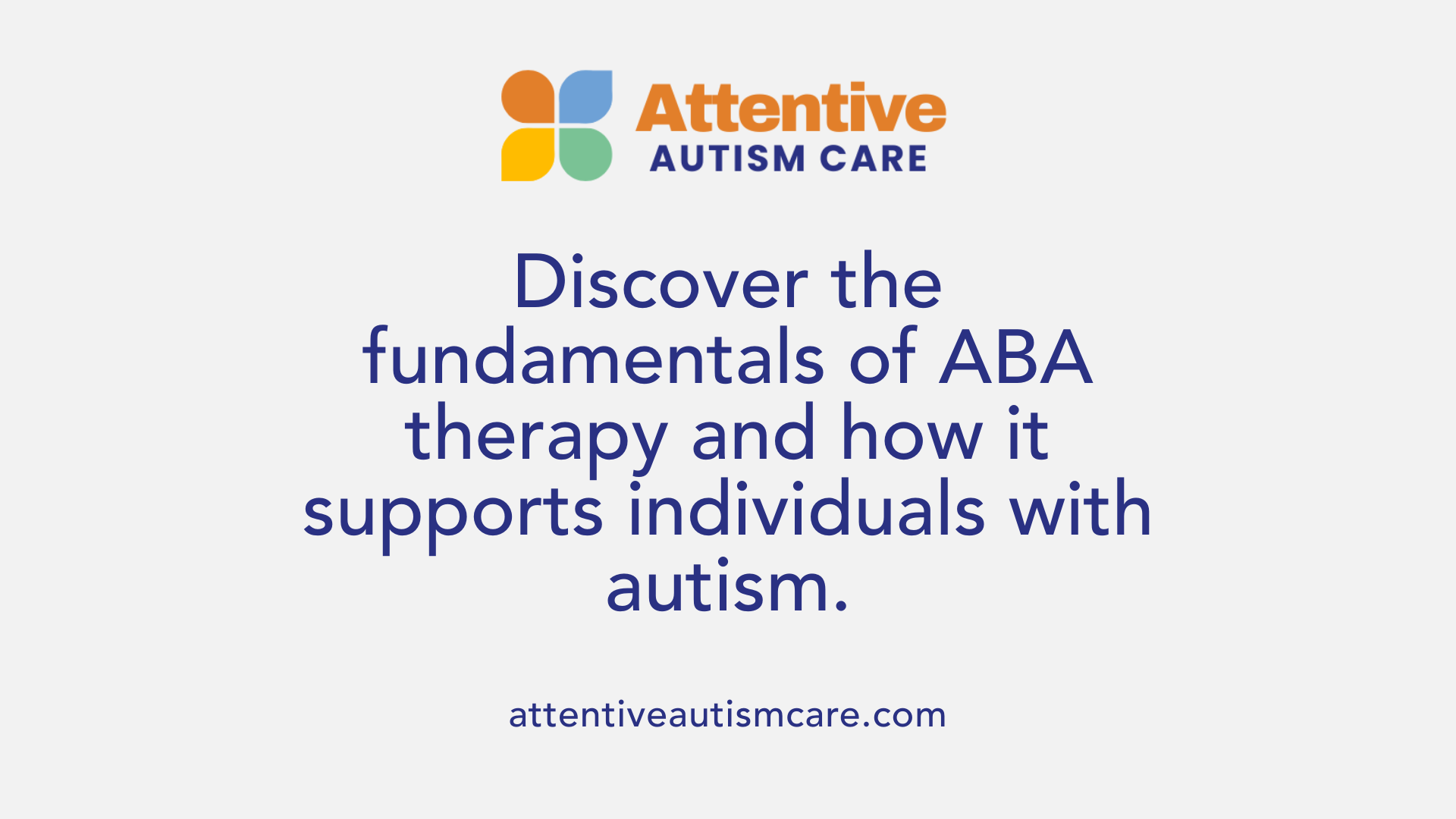
Definition of ABA therapy
Applied Behavior Analysis (ABA) therapy is a scientifically-supported behavioral intervention aimed at enhancing social, communication, and adaptive skills in individuals with autism spectrum disorder (ASD) and related developmental conditions. ABA relies on principles of learning and motivation to encourage positive behaviors and reduce those that impede functioning.
Core principles and techniques
ABA involves analyzing the antecedents, behaviors, and consequences (A-B-C model) to understand behavior patterns. Techniques include positive reinforcement to reward desired actions, prompting to guide responses, and systematic data collection to track progress. Specific methods such as discrete trial training (DTT) break tasks into small, teachable steps with rewards, while pivotal response training (PRT) emphasizes naturalistic settings to improve critical skills like communication initiation.
Individualization and settings of ABA
ABA programs are tailored to each individual's unique abilities, learning styles, and needs. Licensed behavior analysts conduct functional assessments to identify anxiety triggers or challenges, shaping targeted interventions. Therapy is delivered across various environments — homes, schools, and community settings — promoting generalization of skills and consistent support.
ABA's evidence base and controversies
ABA is recognized as an evidence-based approach with extensive research supporting its effectiveness for children with autism. It has been shown to help reduce anxiety, build coping strategies, and teach functional alternatives. However, some criticisms exist regarding its intensity and past use of aversive methods, highlighting the importance of respectful, individualized implementation and family involvement to ensure positive outcomes.
The Benefits of ABA Therapy for Individuals with Autism
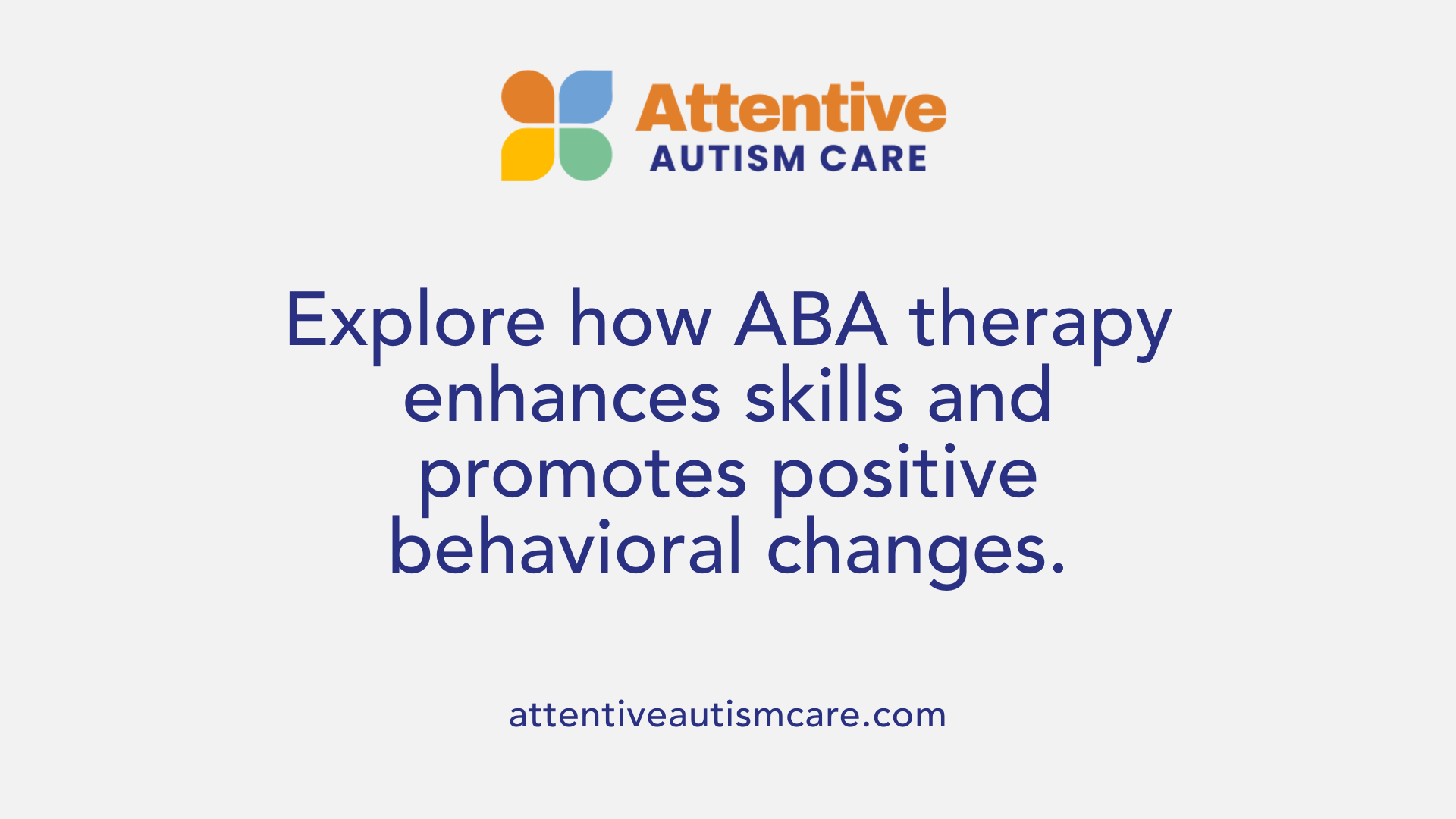
How does ABA therapy benefit individuals with autism?
ABA therapy offers significant benefits for individuals with autism by focusing on skill development and encouraging positive behavioral changes. It targets essential areas such as communication, social interaction, and daily living skills, which are crucial for independence.
Skill development through ABA
ABA uses personalized interventions to teach and reinforce desired behaviors. Techniques such as positive reinforcement and prompting help individuals gradually acquire new skills. For example, teaching communication skills through discrete trial training (DTT) uses step-by-step instructions and rewards for correct responses, facilitating clear and structured learning.
Positive behavioral changes
By discouraging undesired behaviors and promoting functional alternatives, ABA helps reduce anxiety-provoking behaviors and improve adaptive functioning. Therapists identify anxiety triggers and apply strategies like desensitization and relaxation techniques to manage stress responses.
Early intervention outcomes
Early and intensive ABA therapy, often starting before age six, is linked to better developmental outcomes. Children receiving ABA tend to show improvements in language acquisition, social adaptability, and reduced behavioral challenges, providing a strong foundation for lifelong skills.
Progress monitoring and individualized treatment
Progress in ABA therapy is systematically tracked and measured to ensure effectiveness. Programs are tailored to each child’s learning style, language abilities, and stress tolerance. Close collaboration among therapists, educators, and families ensures consistency, supporting skill generalization across multiple settings.
This individualized and data-driven approach allows ABA therapy to adapt over time, maintaining its effectiveness and enabling individuals with autism to reach their fullest potential.
Key Techniques Utilized in ABA Therapy to Manage Anxiety
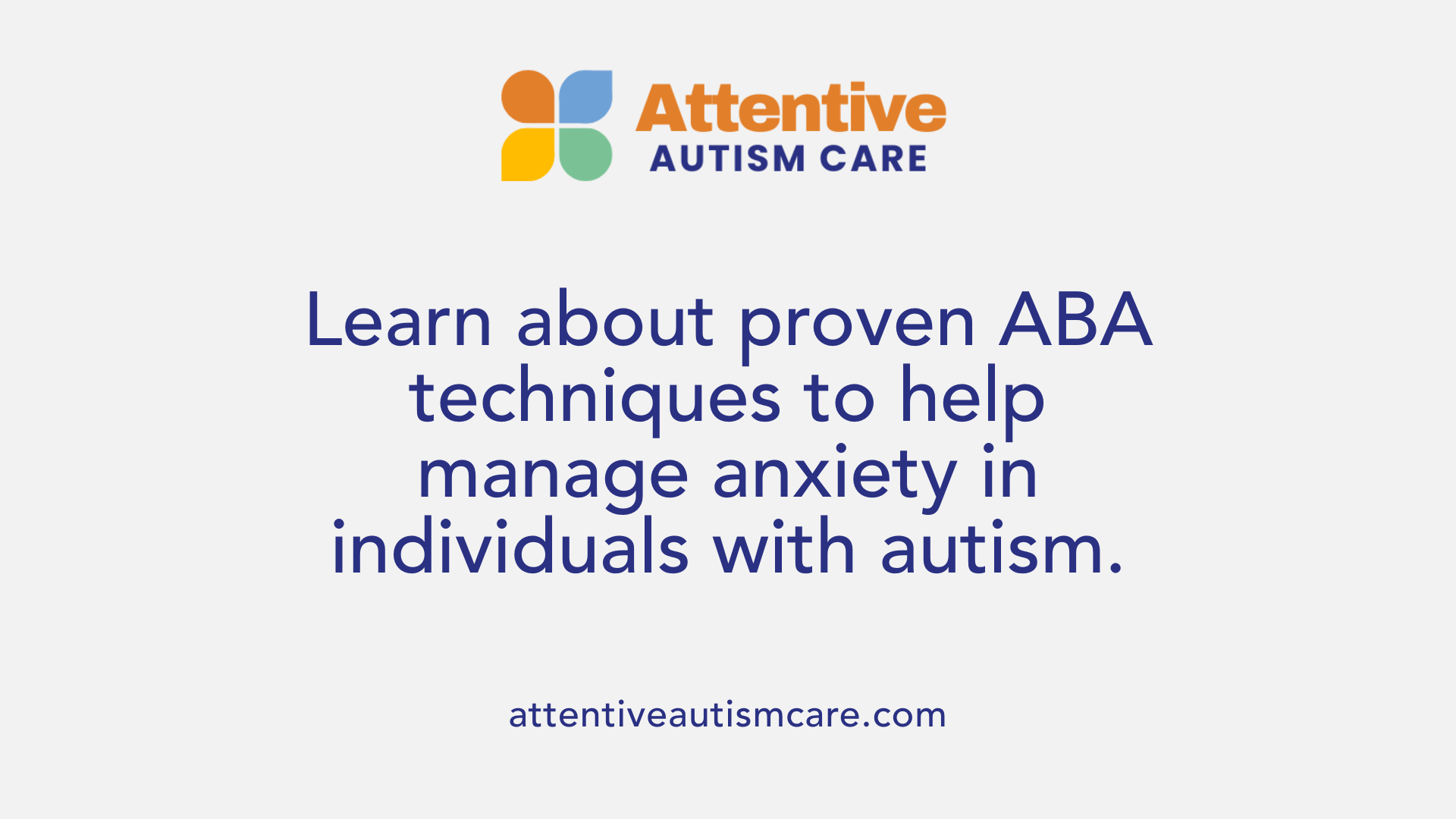
What techniques are commonly used in ABA therapy?
Applied Behavior Analysis (ABA) therapy employs a variety of techniques aimed at encouraging desirable behaviors and minimizing unwanted ones. Among these, positive reinforcement rewards desired actions, promoting their recurrence, while negative reinforcement removes unpleasant stimuli when a positive behavior occurs. These strategies shape behavior by reinforcing functional alternatives to anxiety-provoking actions.
Visual modeling is another vital method, where videos, pictures, and charts are used to demonstrate new skills clearly and effectively. This form of visual learning supports understanding and retention, particularly for individuals with autism who often benefit from visual cues.
Prompting and fading strategies play a critical role. Initially, prompts (such as verbal cues or physical guidance) initiate a behavior, which are gradually faded, promoting greater independence. Alongside this, behavior chaining breaks down complex activities into simple, ordered steps, making multi-step tasks easier to master.
ABA also uses methods such as behavior contracts, extinction (withholding reinforcement for undesired behaviors), redirection, and script fading to develop social and communication skills.
Specific Strategies for Anxiety Reduction
To address anxiety specifically, ABA integrates specialized strategies like desensitization, where children are systematically exposed to anxiety triggers in a controlled, gradual manner to reduce emotional reactivity. Relaxation training—including techniques such as deep breathing, progressive muscle relaxation, and visualization—is taught to manage physiological symptoms associated with anxiety.
Additionally, cognitive-behavioral techniques embedded within ABA help individuals recognize and modify negative thought patterns contributing to anxiety. These strategies are vital for helping children develop effective coping mechanisms, aiding extension of learned skills across different environments.
In summary, ABA therapy blends an array of behavior modification techniques and targeted anxiety interventions to support children with autism in managing anxiety and improving functionality.
| ABA Technique | Description | Application in Anxiety Management |
|---|---|---|
| Positive/Negative Reinforcement | Encourages desired behaviors, reduces undesired ones | Reinforces calm and coping behaviors |
| Visual Modeling | Uses videos, pictures, and charts for skill teaching | Enhances understanding of coping strategies |
| Prompting and Fading | Gradual reduction of prompts to foster independence | Supports mastery of anxiety management steps |
| Behavior Chaining | Breaks tasks into smaller steps | Facilitates learning of complex coping routines |
| Desensitization | Gradual exposure to anxiety triggers | Reduces sensitivity to anxiety-provoking stimuli |
| Relaxation Training | Deep breathing, muscle relaxation, visualization | Helps control physical symptoms of anxiety |
| Cognitive-Behavioral Techniques | Modifies negative thought patterns | Addresses underlying cognitive aspects of anxiety |
ABA Therapy’s Role in Identifying and Addressing Anxiety Triggers
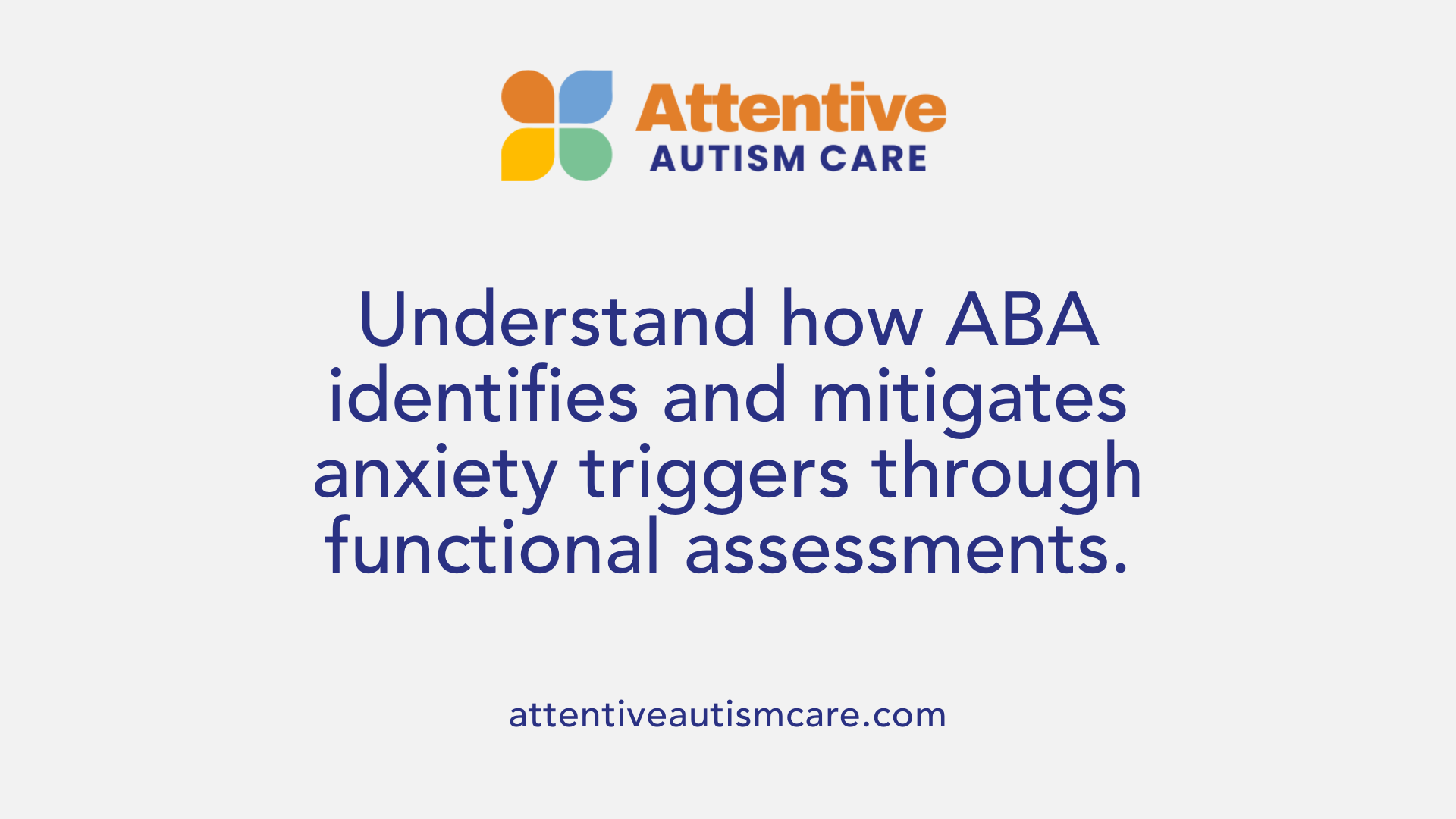
What is Functional Assessment of Anxiety in ABA?
Functional assessments in ABA involve systematically identifying what triggers anxiety-related behaviors and the consequences maintaining them. This process allows therapists to understand why a child with autism exhibits anxious behaviors, which is critical to designing effective interventions.
How Does ABA Identify Anxiety Triggers?
ABA therapists collect detailed data on anxiety-provoking situations, noting specific stimuli or contexts that lead to distress. By analyzing behavior patterns, they pinpoint exact triggers and environmental factors contributing to anxiety, enabling targeted support.
How Are Tasks Broken Down to Reduce Anxiety?
Complex or overwhelming activities are divided into manageable steps through methods like discrete trial training. This step-by-step approach helps the child build confidence while mastering each component, reducing feelings of frustration or fear that can heighten anxiety.
How Does ABA Facilitate Generalization of Skills Across Settings?
ABA interventions emphasize applying learned coping strategies and skills beyond therapy sessions. By practicing these skills in natural environments such as home or school, children better manage anxiety in diverse situations, promoting independence and emotional regulation.
Incorporating Cognitive-Behavioral Techniques and Relaxation Training in ABA
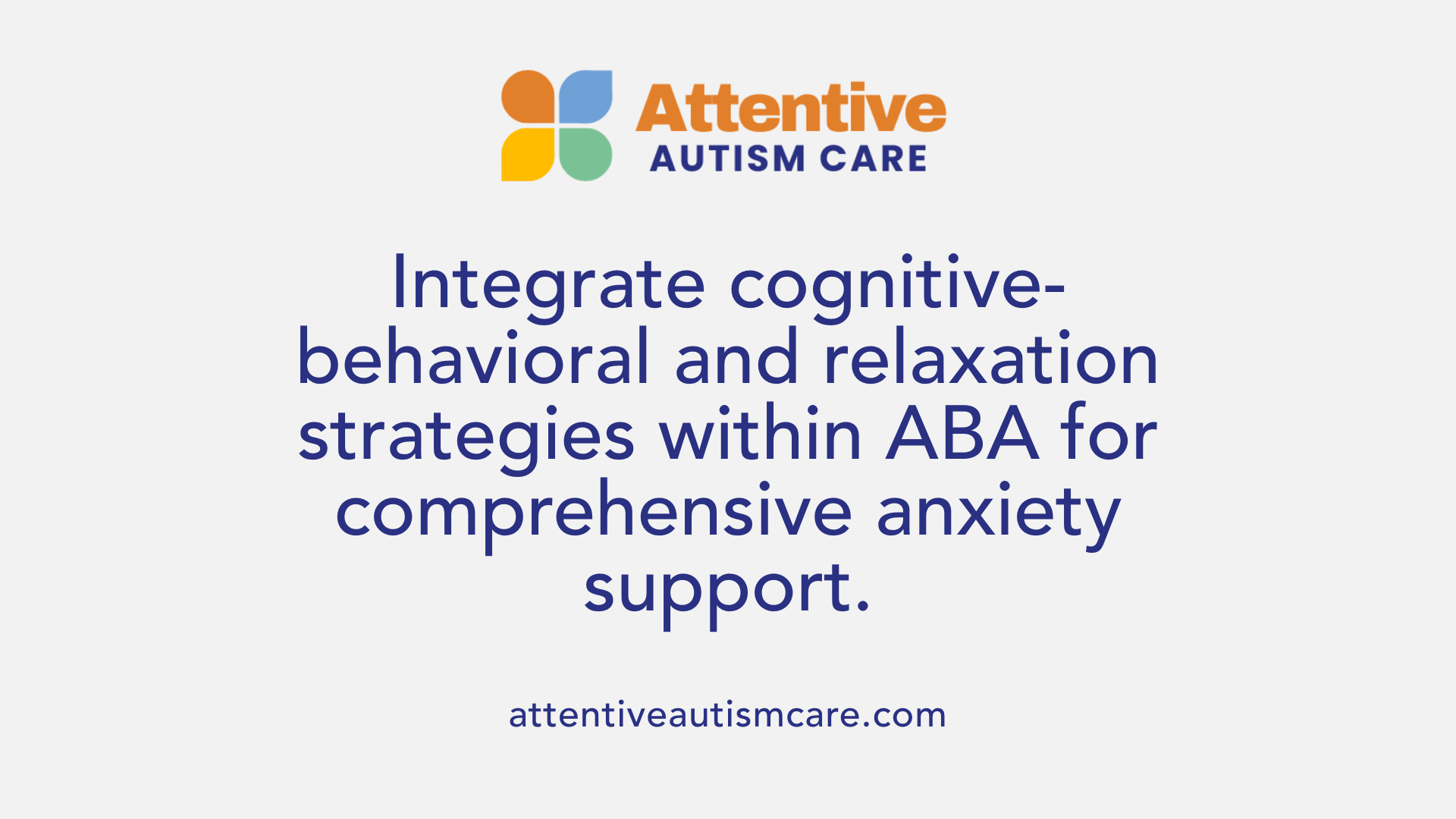
Use of Cognitive Restructuring
Cognitive restructuring within ABA therapy helps children with autism identify and change negative thought patterns that contribute to anxiety. This technique encourages them to replace anxious or irrational thoughts with more positive and realistic ones, supporting improved emotional regulation.
Systematic Desensitization
ABA therapists employ systematic desensitization by gradually exposing children to anxiety-provoking stimuli starting from less stressful situations to more challenging ones. This step-by-step exposure, combined with relaxation exercises, helps reduce the intensity of anxiety responses over time.
Relaxation Methods
Relaxation techniques such as deep breathing, progressive muscle relaxation, and guided visualization are taught as essential coping tools. These methods help manage the physical symptoms of anxiety by calming the nervous system and promoting a sense of control during stressful moments.
Teaching Coping Strategies for Anxiety
ABA interventions include teaching practical coping strategies like counting, engaging in calming activities, and deep breathing. These techniques empower children to manage anxiety in real time, enhancing their ability to face challenging situations with greater confidence.
By integrating cognitive-behavioral methods and relaxation training into ABA programs, therapists create individualized plans that address both the behavioral and emotional aspects of anxiety. This comprehensive approach supports children with autism in building resilience and achieving better outcomes across various settings.
The Importance of Social Skills Training and Positive Reinforcement in Anxiety Reduction
Targeted Social Skills Interventions
Social skills training is a central component of Applied Behavior Analysis (ABA) therapy that specifically addresses social anxiety in individuals with autism. These targeted interventions focus on teaching practical social behaviors and communication skills, which are often areas of difficulty. By systematically practicing interactions, children and adults can improve their ability to initiate and maintain conversations, interpret social cues, and engage in reciprocal exchanges.
Building Confidence in Social Interactions
ABA strategies aim to boost confidence by creating situations that encourage successful social experiences. By breaking down complex social tasks into manageable steps, individuals are supported in gradually increasing their participation in social settings. This progressive approach helps reduce anxiety associated with social interactions and fosters greater ease in engaging with others.
Use of Positive Reinforcement for Calm Behaviors
Positive reinforcement is a powerful tool in ABA therapy to encourage calm and appropriate responses in anxiety-provoking situations. When individuals exhibit behaviors that are incompatible with anxiety—such as remaining calm or using coping strategies—they receive rewards or praise. This reinforcement helps associate stressful social situations with positive outcomes, promoting consistent and adaptive behavior over time.
Tolerance of Routine Changes
Routine changes can be significant sources of stress for those with autism. ABA interventions include training to increase tolerance of changes by preparing individuals through gradual exposure and coping skill development. Enhancing flexibility reduces anxiety linked to unexpected events or transitions, allowing smoother adjustment and improved overall functioning in daily life.
Collaborative and Individualized Approach in ABA Therapy for Anxiety Management
Family involvement and parental training
Parental involvement is essential in ABA therapy for managing anxiety in children with autism. Parents receive training to reinforce strategies at home, helping generalize skills across different settings. This consistency enhances the effectiveness of interventions and empowers families to support their child’s progress.
Collaboration among therapists, educators, and parents
ABA programs promote teamwork among therapists, educators, and parents to ensure a comprehensive and consistent approach. This collaboration allows for sharing observations and adjusting strategies to fit the child's evolving needs, creating a supportive environment that spans school, home, and therapy settings.
Tailoring therapy to learning style and stress tolerance
ABA therapy is carefully individualized, taking into account each child's unique learning style, language abilities, and tolerance for stress. By customizing interventions, therapists can prevent distress and facilitate steady progress, helping children build coping mechanisms for anxiety more effectively.
Complementing ABA with speech and occupational therapy
ABA is often integrated with other therapies such as speech and occupational therapy. Speech therapy enhances communication skills, while occupational therapy supports independence and self-regulation. This multidisciplinary approach addresses multiple areas impacted by anxiety, providing well-rounded support to the child.
Who provides ABA therapy?
ABA therapy is delivered by trained professionals including Board Certified Behavior Analysts (BCBAs) and therapy assistants. These experts design individualized programs based on thorough assessments and apply evidence-based techniques like positive reinforcement to develop essential skills. Therapy is provided across various settings—homes, schools, and community centers—facilitated through collaboration with healthcare providers, insurance systems, and referrals, ensuring a comprehensive network of support for individuals with autism spectrum disorder.
Complementary Therapies and Broader Strategies for Anxiety in Autism
What developmental therapies support anxiety management in autism?
Developmental therapies like speech-language therapy play a crucial role in supporting individuals with autism. These therapies focus on enhancing communication skills, which can reduce frustration and anxiety linked to difficulties in expressing needs. Occupational therapy also contributes by helping children develop independence in daily activities such as dressing and social interaction. Often, it integrates sensory integration therapy and physical therapy to address sensory sensitivities—common anxiety triggers in autism.
How do educational approaches like TEACCH help?
Educational methods such as TEACCH emphasize structured environments and consistency, using visual routines and clear physical boundaries to guide learning. This predictability helps reduce anxiety by creating a stable and understandable setting for individuals with autism. Visual supports and routines can effectively lessen confusion and stress, enabling learners to manage expectations and transitions more comfortably.
What are social-relational strategies for anxiety in ASD?
Social-relational approaches aim to enhance social skills and emotional connections. Models like DIR/Floor Time and Relationship Development Intervention (RDI) focus on building meaningful interactions, which can mitigate social anxiety. Tools like Social Stories and social skills groups provide frameworks for understanding social situations and practicing interaction, promoting confidence and reducing anxiety in social contexts.
What psychological therapies are effective for autistic adults?
Cognitive-behavioral therapy (CBT) is the most researched psychological intervention for anxiety in autistic adults, though results vary. CBT helps individuals identify and modify negative thought patterns associated with anxiety. Mindfulness-based therapy (MBT) shows promise, especially in group settings, by teaching present-focused awareness and relaxation techniques that reduce anxiety symptoms. Despite their potential, both therapies reflect a need for further evidence specific to autism.
What is the role of medication in anxiety management?
Although no medications treat core symptoms of autism, pharmacological interventions can manage co-occurring anxiety. Medications may address symptoms such as restlessness, sleep disturbances, or mood issues under medical supervision. Medication is often combined with behavioral, developmental, and psychological therapies to offer holistic anxiety management for individuals on the autism spectrum.
Moving Forward with Effective Anxiety Management in Autism
Addressing anxiety disorders in individuals with autism demands a multifaceted and individualized approach. Applied Behavior Analysis offers a scientifically validated framework to identify anxiety triggers and develop coping mechanisms through tailored interventions. Coupled with cognitive-behavioral techniques, relaxation training, and robust family involvement, ABA can substantially reduce anxiety and improve daily functioning. Complementary therapies, educational strategies, and psychosocial treatments further enrich the support landscape. Continued research, particularly focusing on autistic adults, and an emphasis on collaboration among therapists, families, and educators remain crucial to advancing effective anxiety management and enhancing quality of life for those on the autism spectrum.
References
- Treatment and Intervention for Autism Spectrum Disorder
- Autism and Anxiety: Treatment Options and ABA Techniques
- Can ABA Therapy Help with Anxiety? In Many Cases, Yes
- The Role of ABA Therapy in Managing Anxiety
- Autism and Anxiety
- Treatment of anxiety in autistic adults: A systematic review
- Behavioral Health Treatment | Children with Autism Spectrum ...
- Applied Behavior Analysis (ABA)
- California ABA Therapy - Autism Therapy & Services



































































































